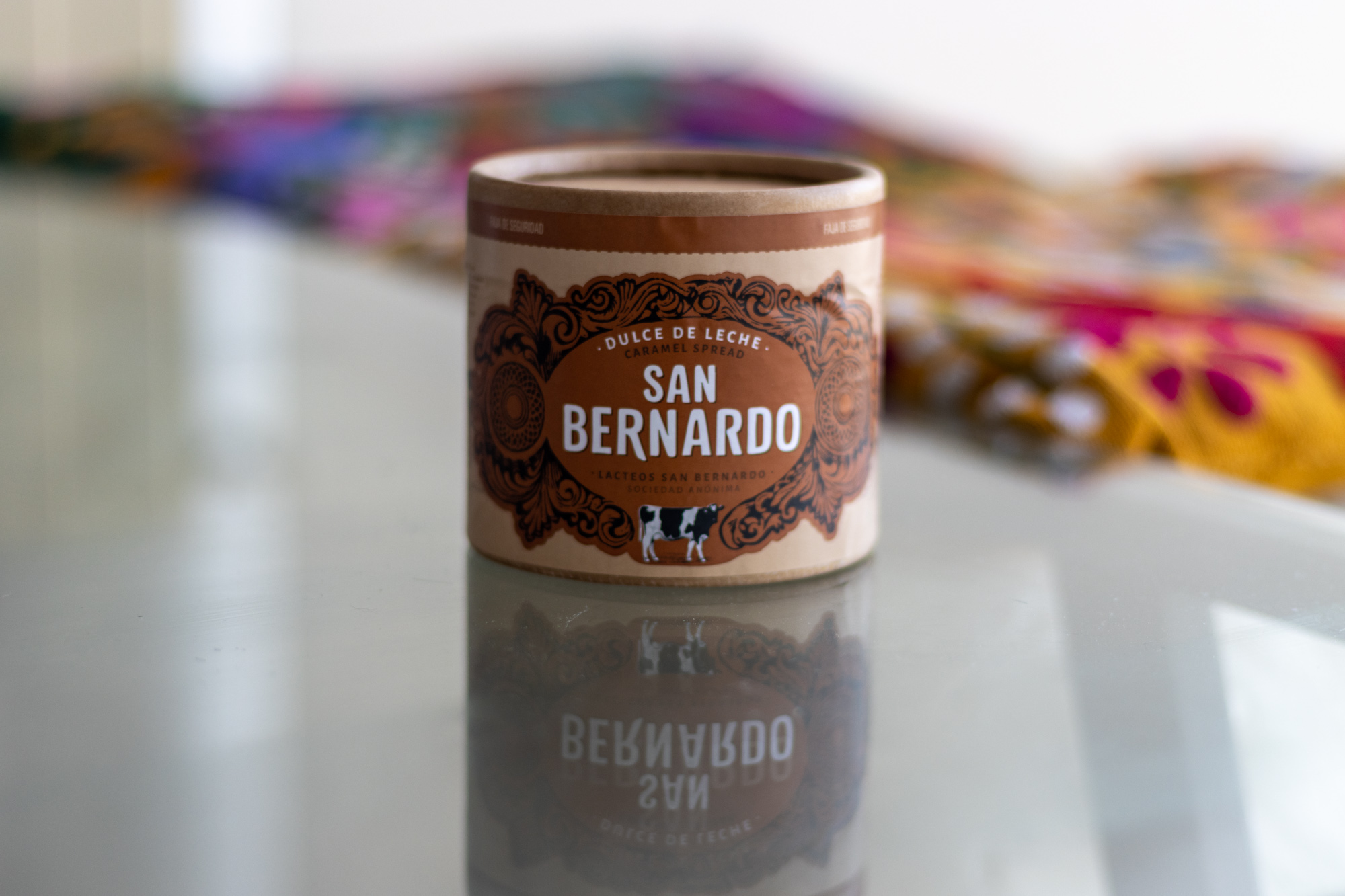Written and photographed by Samantha Demangate
It’s a spring afternoon in Buenos Aires, Argentina. The smell of asado is in the air, as families gather for a Sunday barbecue. I’ve just finished my second cup of coffee for the day and am finding myself walking towards the kitchen. I reach for a spoon and then for the cabinet. In my hand, I have a jar of rich, golden sweetness. I dip in the spoon and savor a little bite of dulce de leche.

Smooth, chewy, sultry caramel. Often paired with apples, popcorn, pretzels, you name it, caramel is a staple in the world of desserts. If you like caramel, you will love the ever richer dulce de leche. I know I do!
Leche, Spanish for milk, hints at the crucial difference between the two delicious sweets. A simple combination of water and sugar will bring caramel to life, whereas dulce de leche requires simmering milk and sugar. DDL can also be made with sweetened condensed milk, making the experience that much more intense.
The Origins of DDL
To this day, there is debate about the origins the celebrated sweet. Many believe that the birth of the dessert was in the Rio de la Plata region. The story goes that the maid of Argentine politician, Juan Manuel de Rosas, created the treat by mistake. Other stories claim that Napoleon’s chef was responsible for this fortuitous accident. Still, others are certain that versions of dulce de leche were developed in different regions of the world. The history of the treat is difficult to untangle, but one thing is sure, it is beloved.


Argentina’s Dedication to DDL
My first taste of dulce de leche was in the capital of Argentina, Buenos Aires. Argentines have a passion for DDL and will add it to almost any confection. You can find cakes piled high with dulce de leche in the many cafes throughout Buenos Aires. Just when I thought a sweet dish couldn’t get sweeter, I ordered a serving of flan at a little restaurant. There, a kind abuela with a large spoon, thumped a heap of dulce de leche atop my plate, the flan caving under the weight. Additionally, DDL is routinely packed into medialunas (croissants), swirled in ice cream and stirred into coffee. People eat alfajores, an essential goodie of the Rio de la Plata, with the casualty of energy bars. Two soft, crumbly cookies, stuffed with a layer of creamy dulce de leche serves as a common afternoon snack.
Alfajores?
For more information about alfajores and their origins, click here!


As a lover of sweets myself, I see caramel as being the gateway drug to dulce de leche. In addition, my boyfriend, a longtime health nut, has coped with a DDL addiction. Since our first bite of an alfajore, we knew we were in trouble. Paired with a steaming cafe con leche (coffee with milk), we became obsessed. This led to several impulse purchases of chewy tabs at almost every corner store we stepped into. We had to stop ourselves, because honestly, my teeth were hurting.

No supermarket, corner store or farmer’s market in the Rio de la Plata region is complete without a selection of DDL. For an elevated experience, you can indulge yourself in shops dedicated to the delicacy. Zany flavors such as mint, melon and mango are available to taste. If that doesn’t sound appetizing, you can always stick to the tried and true original. If you want to renew your passion for desserts, you should absolutely incorporate dulce de leche into your next treat.
Did you enjoy this article? Check this out: Experience Comic Con Argentina

